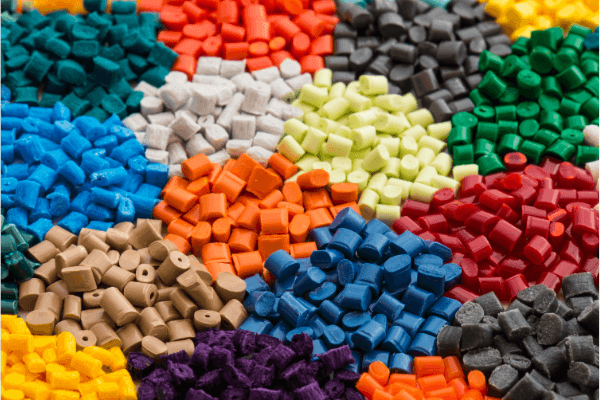What are the differences between thermosetting plastics and thermoplastics? In this article, we delve into the definition of these two types of polymers, which differ in terms of their behavior at high temperatures. The classification of plastics also includes a third group, elastomers, which are highly flexible and can be deformed and easily regain their initial shape.
On this occasion, we will take a closer look at two of the best-known types of plastic materials, thermoplastic polymers and thermosetting polymers, as well as their differences.
Difference between thermoplastics and thermosets
The main differences between thermosetting and thermoplastic plastics lie in their behavior at elevated temperatures: while thermoplastic polymers can be remolded and heated as many times as desired, thermosetting polymers can be remolded and heated only once.
Here we can take a closer look at the main differences between thermosets and thermoplastics:
| Thermosetting Polymers | Thermoplastics Polymers |
| Can be heated and molded once only | Can be heated and molded several times |
| They harden during their formation and do not soften when heated | They soften when heated (sometimes liquefy) |
| They do not melt. They can withstand high temperatures. | When heat is applied, they turn white, regaining their hardness upon cooling. |
| Up to 5 minutes to stabilize | Stabilization can be achieved in 10 seconds |
| High thermal and chemical resistance. | Good mechanical properties and easy processing. |
| Insoluble. | Insoluble in organic solvents. |
| Examples: silicones, some types of polyester and phenolic materials. | Examples: polyethylene, polypropylene, polystyrene, polyvinyl chloride. |
Thermoplastic polymers
Thermoplastics are a type of polymer that can be heated and molded several times, which makes them easy to recycle and relatively soft. Most plastics belong to this group, which can also be mixed with liquids such as paint. At the molecular level, the increase in temperature causes secondary bonds to weaken, facilitating the movement of adjacent chains under the action of stress, which is why products based on these plastics are usually manufactured with the application of heat and pressure.
Types of thermoplastic polymers
Polyethylene, polystyrene, PVC or polypropylene are some of the most common types of thermoplastics. Some of them are described below:
Polyethylene terephthalate
Better known as PET, this cheap, resistant and recyclable plastic is one of the most widely produced polymers in the world. It is used primarily in the food and beverage industry (from food containers to plastic bottles), but also in the textile sector (polyester fiber) and in other industries, such as the manufacture of fiberglass and carbon nanotubes.
Polyethylene
Polyethylene, which can be manufactured in different densities, is the most common plastic on earth and can be found in a large number of products. According to its density we find: Low Density Polyethylene (LDPE or LDPE), Medium Density Polyethylene (MDPE), High Density Polyethylene (HDPE) and Ultra High Molecular Weight Polyethylene (UHMWPE).
Polystyrene
This transparent thermoplastic is available in both rigid and expanded form. Examples include tableware, containers and packaging protection.
Polyvinyl chloride
Known as PVC, it has rigid or flexible properties and is notable for its ability to blend with other materials.
What are thermoset polymers?
Thermoset plastics are a type of polymer that can be heated and molded only once; if reheated, they burn.
These cross-linked polymers harden during their formation and do not soften when heated, in fact, they are able to withstand high temperatures. These cross-linked polymers are characterized by cross-linked bonds between molecular chains that only break when heated to excessive temperatures, which causes degradation of the polymer.
Types of thermosetting polymers
Polyurethane (PUR)
This polymer can be thermoplastic or thermosetting. When we refer to the latter group, its most common form is insulating foams.
Phenol Formaldehyde Resins
Phenol is a very high pressure laminated polymer composed of cotton canvas base with phenol formaldehyde (PF) resins. It is commonly used in electrical insulation.
Polyester resins
Polyester resins (UP) are often used in the construction of boats, vehicles, pipes, motorcycle hulls, fishing rods or even skis. These resins are combined with fiberglass to form high-strength composite materials.
Epoxy resins or coatings
These polymers are used in protective coatings because of their high strength.
So much for our review of the main differences between thermosets and thermoplastics, as well as their characteristics, definition and types.
Need help choosing the type of plastic that best suits your needs? Our Materials innovation and Forensic enginneer team will help you make the best decision. We are experts in materials, contact us.





